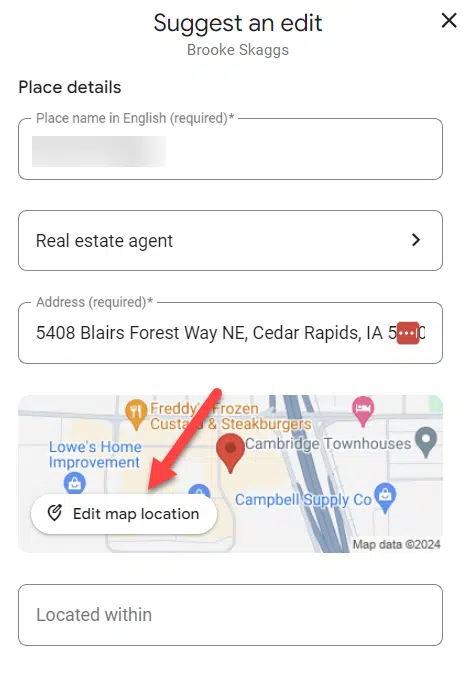Need an SEO link building blogger outreach service?
Contact: [email protected].
In today’s competitive digital landscape, every website owner strives to improve their search engine ranking and increase their online visibility. One effective way to achieve these goals is through backlink submission. Backlinks are hyperlinks that connect one website to another, playing a crucial role in search engine optimization (SEO). In this comprehensive guide, we will delve into what backlink submission is, its importance, strategies to build quality backlinks, and best practices to follow.
What are Backlinks and Why are They Important?
A backlink is a link from one website to another. Also known as inbound links, these hyperlinks are essential in determining the credibility, relevance, and authority of a website according to search engines. Search engines like Google consider backlinks as votes of confidence. The more high-quality backlinks a website has, the more trustworthy and reliable it appears to search engines, resulting in better organic search rankings.
Backlinks are a crucial component of off-page SEO. They help search engines understand the popularity and reputation of a website, enabling them to determine its relevance for a given search query. High-quality backlinks act as endorsements from other reputable websites, implying that your website provides valuable and reliable content. As a result, search engines consider your website more trustworthy, ranking it higher in the search engine results pages (SERPs).
Types of Backlinks
Not all backlinks are created equal. It is essential to understand the different types of backlinks to develop a well-rounded backlink profile. Here are the three main types of backlinks:
1. Natural Backlinks
Natural backlinks, also known as organic backlinks, occur when another website willingly links to your content without any request or exchange. These backlinks are ideal and highly regarded by search engines as they indicate the website’s credibility and the quality of its content. Natural backlinks typically occur when your content is informative, unique, or valuable to the linking website’s audience.
2. Manual (or Built) Backlinks
Manual backlinks are acquired through deliberate efforts and strategies to improve a website’s backlink profile. These backlinks involve actively reaching out to other websites, requesting them to link to your content or guest posting on relevant blogs. Manual backlinks can be beneficial for boosting your website’s backlink profile, but it is crucial to focus on gaining high-quality links from reputable websites rather than just quantity.
3. Self-Created Backlinks
Self-created backlinks are created by website owners themselves, usually by submitting links to web directories, social bookmarking sites, or forum signatures. While these backlinks might be easy to acquire, they are generally of lower quality and can do more harm than good for your website’s SEO. Search engines are well-aware of these self-created backlink practices and often devalue the importance of such links in their algorithms.
Top Strategies for Building Quality Backlinks
Building high-quality backlinks requires intentional and strategic efforts. Here are some effective strategies to consider:
1. Create Valuable and Share-Worthy Content
Creating outstanding, informative, and original content is the foundation of building a strong backlink profile. When your content is valuable and relevant, other websites are more likely to link back to it naturally. Invest time and effort in producing in-depth articles, guides, infographics, videos, or other forms of content that provide genuine value to your target audience.
2. Reach Out to Relevant Websites
Identify websites or blogs within your niche that could benefit from your content. Reach out to them and offer your content as a resource or pitch a guest post idea. Personalized outreach can help establish connections, and if your content is valuable, there is a higher chance they will link back to it.
Need an SEO link building blogger outreach service?
Contact: [email protected].
3. Engage in Guest Blogging
Guest blogging is an effective way to build backlinks and establish your authority within your industry. Identify authoritative blogs that accept guest posts and contribute well-written and insightful articles. In your guest posts, include relevant links back to your own website, providing additional value to readers and increasing the likelihood of clicks and traffic to your site.
4. Leverage Social Media Platforms
Social media platforms provide an opportunity to promote your content and attract backlinks. Share your articles, infographics, or videos on platforms like Facebook, Twitter, LinkedIn, or Pinterest. If your content is valuable and engaging, it may get shared by others, leading to natural backlinks.
5. Monitor Your Competitors’ Backlinks
Keep an eye on your competitors’ backlink profiles to identify potential opportunities. Tools like Ahrefs, SEMrush, or Moz can help analyze your competitors’ backlinks, allowing you to reach out to the same or similar websites and request backlinks to your content.
Best Practices for Backlink Submission
While building backlinks, it is essential to follow best practices to ensure the effectiveness and longevity of your SEO efforts. Here are some key best practices to keep in mind:
1. Focus on Quality over Quantity
It is better to have a few high-quality backlinks than numerous low-quality ones. Backlinks from authoritative and relevant websites have more weight and impact on your SEO. Quality backlinks will not only improve your website’s visibility but also protect it from potential penalties imposed by search engines for low-quality link building.
2. Diversify Your Backlink Profile
Building a diverse backlink profile helps your website appear natural and credible to search engines. Aim for a mix of natural, manual, and self-created backlinks, focusing primarily on natural and manual ones. Also, diversify your sources by seeking backlinks from various domains, bloggers, industry publications, or social media.
3. Use Descriptive Anchor Text
The anchor text is the clickable text of a hyperlink. When acquiring backlinks, prefer using descriptive and relevant anchor text rather than generic phrases like “click here.” Descriptive anchor texts provide search engines with context about the linked page’s content, improving its relevance and ranking for related search queries.
4. Monitor and Disavow Toxic Links
Regularly monitor your backlink profile for any potentially harmful backlinks. Tools like Google Search Console can help identify toxic or spammy links that may negatively impact your SEO. If you find any such links, disavow them promptly using the Disavow Links tool to prevent them from affecting your website’s ranking.
5. Foster Relationships with Influencers and Industry Experts
Building relationships and connections with influencers and experts in your industry can lead to valuable backlink opportunities. Engage with them on social media, participate in industry events, or collaborate on content. Influencers and experts often have a strong online presence and can provide quality backlinks or amplify your content reach, boosting your SEO efforts.
Backlink submission plays a pivotal role in enhancing your website’s SEO performance and organic search rankings. By understanding the importance of backlinks and adopting effective strategies, you can build a robust backlink profile that establishes your website’s credibility and authority. Remember to focus on quality over quantity, diversify your backlink sources, and follow best practices for sustainable and long-term success. With a well-structured and comprehensive backlink strategy, you can improve your website’s visibility, attract organic traffic, and ultimately achieve your online goals.
Need an SEO link building blogger outreach service?
Contact: [email protected].




